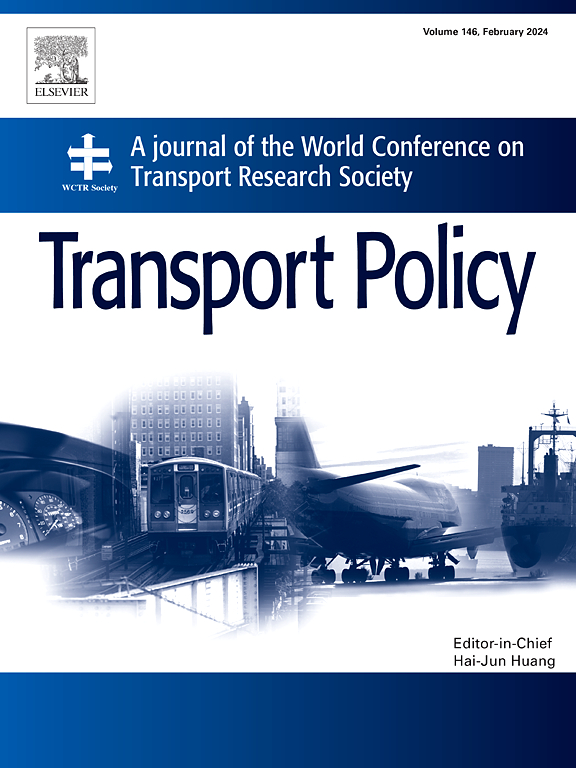Advancing sustainable urban mobility by exploring trends and reimagining cost-benefit analysis for active travel
IF 6.3
2区 工程技术
Q1 ECONOMICS
引用次数: 0
Abstract
Active travel (AT), which commonly implies walking and cycling, is a critical component in any modern urban transportation system. AT is sustainable, equitable, cost-effective, gender-neutral, and serves as an important mitigation measure for transport-driven greenhouse gases (GHGs) while promoting healthy lifestyle and social wellbeing. However, vehicle-centric urban planning has resulted in lower levels of AT in many countries. Studies evaluating the effects of AT on society and ecosystems tend to highlight the tangible benefits over the intangible ones, potentially missing the broader advantages of AT. Furthermore, there is a considerable difference in adopting AT promoting measures and policies between the developing and the developed worlds. There are several economic methods to evaluate various aspects of AT, among which cost-benefit analysis (CBA) is widely used. However, for a more informed decision-making by political leadership, it is essential to adopt a comprehensive evaluation methodology that covers the full spectrum of costs and benefits associated with AT, hereby enabling better urban transport planning. This paper will comprehensively evaluate the benefits and costs associated with AT and, highlight how traditional CBA often undervalues AT by ignoring some of its critical costs and benefits.
求助全文
约1分钟内获得全文
求助全文
来源期刊

Transport Policy
Multiple-
CiteScore
12.10
自引率
10.30%
发文量
282
期刊介绍:
Transport Policy is an international journal aimed at bridging the gap between theory and practice in transport. Its subject areas reflect the concerns of policymakers in government, industry, voluntary organisations and the public at large, providing independent, original and rigorous analysis to understand how policy decisions have been taken, monitor their effects, and suggest how they may be improved. The journal treats the transport sector comprehensively, and in the context of other sectors including energy, housing, industry and planning. All modes are covered: land, sea and air; road and rail; public and private; motorised and non-motorised; passenger and freight.
 求助内容:
求助内容: 应助结果提醒方式:
应助结果提醒方式:


